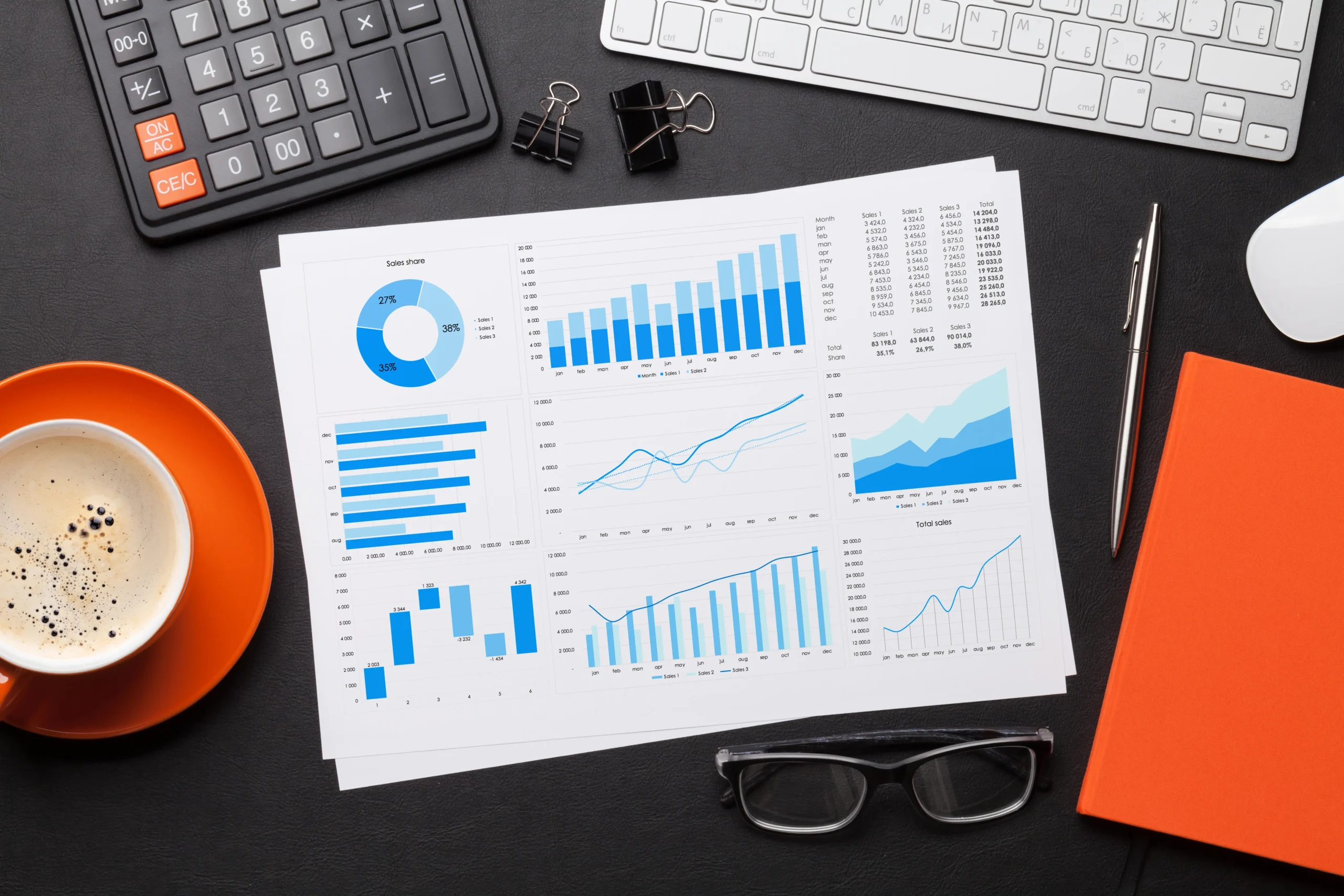October 22, 2025

Google won’t crawl your pages fast enough, and your fresh content sits invisible in search results. You need immediate action, not vague promises about “eventually” getting indexed. The solution lies in understanding exactly how to trigger Google’s crawling process using verified tactics that force Googlebot to prioritize your URLs. Let’s explore the insider methods that actually work.
Understanding crawl triggers transforms your indexing speed. Google’s index contains approximately 400 billion documents as of 2025, yet your pages can jump the queue with strategic intervention. This guide reveals the technical tactics professionals use to force immediate crawls and achieve faster visibility.
Google Search Console remains the most direct method to trigger crawls immediately. The URL Inspection Tool provides real-time access to Googlebot’s crawling decisions and indexing status, giving you unprecedented control over when your pages get discovered.
Use Google Search Console’s URL Inspection Tool to request indexing for individual URLs immediately. The tool submits pages to a priority-based crawl queue, typically processing requests within 24-48 hours if no errors are detected.
The URL Inspection Tool lets you test and request indexing for specific URLs. You must be an owner or full user of the Search Console property to request indexing, and there’s a quota for submitting individual URLs. Enter your full URL in the inspection bar, run a live test to verify accessibility, then click “Request Indexing.”
The tool provides both the indexed version from the last crawl and a live test that checks how the page looks right now. This dual view helps identify rendering problems before submitting indexing requests. When your page passes the live test with no issues, the request enters Google’s priority queue.
Check your page’s crawl date before requesting indexing. If you need Google to index a URL for the first time or if you’ve made changes to an indexed page, request indexing only after confirming the live test shows no errors. Multiple requests for the same URL won’t accelerate crawling.
Request indexing strategically to maximize impact. Google limits index requests to approximately 10 per day per property through the URL Inspection Tool interface. This quota resets daily, so prioritize your most important pages first.
For bulk submissions exceeding the daily limit, use XML sitemaps instead. If you have large numbers of URLs, submit a sitemap, which can be very helpful if you just launched your site or recently performed a site move. The sitemap method handles thousands of URLs without hitting individual request quotas.
A mid-sized e-commerce site updated 50 product pages with new pricing. Instead of requesting indexing for all pages individually, they updated their sitemap’s lastmod tags and resubmitted to Search Console. According to Google’s John Mueller, updating the sitemap with last modified dates helps Googlebot discover and prioritize recently changed content.
Understanding how search engines discover and prioritize content reveals the mechanics behind crawl triggers. Googlebot operates on algorithms that balance crawl capacity with perceived value, meaning you can influence crawling frequency through specific optimization signals.
Search engines allocate crawl budgets based on site authority, update frequency, and technical health. Popular sites with frequent updates get crawled multiple times daily, while smaller sites may see crawls every few days or weeks.
Websites that are updated frequently with new blog posts, products, or pages are typically crawled more often, sometimes multiple times a day for very active sites. Your crawl frequency depends on three primary factors: content freshness, site authority, and technical performance.
On July 5, 2024, Google switched to Mobile Googlebot as the default user agent, evaluating websites as if accessed from a smartphone. This shift means mobile optimization directly impacts crawl frequency. Sites optimized for mobile devices receive priority in Google’s mobile-first indexing system.
Crawl budget represents the number of pages Googlebot can and wants to crawl within a given timeframe. Taking crawl capacity and crawl demand together, Google defines a site’s crawl budget as the set of URLs that Googlebot can and wants to crawl.
Three factors influence your crawl budget most:
Site Speed Checklist:
Quick server responses to Google’s crawl requests can lead to more pages being crawled on your site. Every millisecond matters when Googlebot allocates crawling resources across millions of sites daily.
Eliminate crawl budget waste by blocking unnecessary pages. Use robots.txt to block crawling of URLs like infinite scrolling pages, differently sorted versions of the same page, or session identifiers that create duplicate content. Focus your crawl budget exclusively on valuable, unique content.
Link building accelerates crawl discovery through both external backlinks and strategic internal connections. Googlebot follows links from known pages to discover new content, making your linking structure the primary pathway for crawl distribution across your site.
High-quality backlinks from authoritative sites signal content importance to Google, increasing crawl frequency and priority. Internal links distribute crawl equity throughout your site, ensuring all pages get discovered efficiently.
Well-established websites with many high-quality backlinks tend to be crawled more often. When authoritative sites link to your content, Googlebot interprets this as a signal to visit more frequently and allocate additional crawl resources.
Fresh backlinks trigger immediate crawl responses. When a new external link points to your page from a regularly crawled site, Googlebot often discovers and crawls your URL within hours. This mechanism explains why content marketing and digital PR remain effective for accelerating indexing.
Mini-Case Study: A SaaS company published a technical guide that earned coverage from three industry publications within 48 hours. Googlebot crawls pages with strong link signals most often, and the homepage typically receives the highest crawl frequency. The guide received its first crawl within 6 hours of the first backlink appearing.


Technical SEO optimization removes crawling obstacles and provides clear signals about content structure. Proper implementation of technical elements helps Googlebot understand, access, and prioritize your pages for immediate crawling.
Implement structured data, optimize crawl paths, and eliminate technical errors to trigger faster crawls. Schema markup provides explicit content signals, while clean site architecture guides efficient crawl distribution.
Schema markup can increase the number of featured snippets by 677% and improve the CTR by an average of 30%. More importantly for crawling, structured data helps Google understand content immediately upon discovery.
As of 2024, over 45 million web domains markup their web pages with over 450 billion Schema.org objects. This widespread adoption signals its effectiveness in communicating with search engines. Implement JSON-LD format for cleanest integration with minimal page weight impact.
Common schema types that trigger enhanced crawling:
According to a Data World benchmark study, LLMs grounded in knowledge graphs achieve 300% higher accuracy compared to those relying solely on unstructured data. This accuracy extends to Google’s understanding of when content should be recrawled.
Meta tags provide crawl directives that Googlebot follows precisely. Return a 404 or 410 status code for permanently removed pages rather than blocking with robots.txt, as blocked URLs will stay part of your crawl queue much longer. The 410 status code signals permanent removal, preventing wasted crawl attempts.
Canonical tags consolidate crawl equity to preferred versions. When multiple URLs display similar content, the rel=”canonical” tag directs Googlebot to focus crawling resources on the primary version, preventing duplicate content issues from fragmenting your crawl budget.
User experience signals influence crawl prioritization through engagement metrics and Core Web Vitals. Sites providing excellent user experiences receive preferential crawl treatment as Google prioritizes quality content in its index.
Fast-loading pages with strong engagement metrics signal content quality to Google, increasing crawl frequency. Core Web Vitals directly impact crawl allocation as Google prioritizes user-focused sites.
Site speed directly impacts crawl budget, as faster-loading pages consume less crawl time and allow Google to crawl more pages within the same timeframe. Optimize Largest Contentful Paint under 2.5 seconds for optimal crawl efficiency.
Page experience encompasses mobile responsiveness, safe browsing, and HTTPS security. Googlebot switched to Mobile Googlebot as default on July 5, 2024, making mobile optimization critical for crawl prioritization. Ensure your mobile version renders identically to desktop to avoid mobile-first indexing issues.
Quality signals accumulate across multiple dimensions: content depth, update frequency, and user engagement. Google defines perceived inventory as the set of URLs Googlebot wants to crawl based on popularity and importance. Build these signals systematically.
Quality Signal Checklist:
Googlebot prioritizes fresh content, and when your XML sitemap shows new pages or site updates, crawl frequency increases. Regular updates train Googlebot to return more frequently to check for changes.
Internal linking distributes crawl equity throughout your site and accelerates discovery of new pages. Strategic internal links create pathways for Googlebot to navigate efficiently, ensuring every important page receives adequate crawl attention.
Connect new pages to high-authority existing pages through contextual internal links. This distributes crawl equity and helps Googlebot discover new content within hours instead of days.
Moz recommends keeping links within 100-150 per page to stay within search engine crawl limits, though important authority pages may have 200-250 do follow links. Excessive links dilute the crawl equity passed to each destination.
Flat site architecture accelerates crawling by minimizing click depth. Keep important pages within three clicks from your homepage to improve crawl efficiency and get key content indexed faster. Every additional click layer reduces crawl priority exponentially.
Hub-and-spoke content models organize topical authority effectively. Create comprehensive pillar pages that link to related cluster content, then reciprocate links back to the pillar. This configuration helps search engines regard your site as an authoritative source, improving rankings on multiple keywords.
When Google crawls a website, it follows internal and external links using Googlebot, reaching the homepage and following the first links encountered. This sequential discovery pattern means homepage links get crawled first and most frequently.
Broken links waste crawl budgets and create dead ends for Googlebot. Every 404 error encountered consumes crawl resources without providing indexable content, making broken link elimination critical for crawl optimization.
Fix broken links immediately using 301 redirects to relevant alternatives. Widespread 404 errors waste crawl budget and prevent Google from discovering valid pages efficiently.
Broken links waste crawl budget and frustrate users, with Google prioritizing well-maintained, accessible websites in search rankings. Regular audits using Screaming Frog or Ahrefs identify internal 404s before they accumulate.
Excessive 404s can consume Google’s crawl budget, potentially delaying the discovery and indexing of new or important content. While 404s aren’t direct ranking factors, they impact crawl efficiency substantially.
Implement proper redirects for permanently moved content. Use 301 redirects to permanently redirect old, broken URLs to relevant existing pages, which passes some of the original page’s authority to the new URL. This maintains link equity while eliminating crawl waste.
Unlike standard 404s, soft 404s return a 200 OK status while showing “page not found” messaging, consuming crawl budgets without offering value. Ensure error pages return proper 404 or 410 status codes.
Duplicate content fragments crawl the budget by forcing Googlebot to evaluate identical pages repeatedly. Consolidating duplicate content through canonical tags and redirects focuses crawl resources on unique, valuable pages.
Use canonical tags to consolidate duplicate content and prevent crawl budget waste. Google doesn’t want to index multiple pages with identical content, so proper canonicalization prioritizes your preferred versions.
Google has categorically stated it doesn’t want to waste resources crawling copied pages, internal search result pages, and tag pages. Implement rel=”canonical” tags to indicate preferred versions when duplicate content serves legitimate purposes.
Common duplicate content sources include URL parameters, session IDs, and filtered category pages. Faceted navigation creates duplicate content from the site, and session identifiers simply sort or filter pages without providing new content. Block these variations through robots.txt or no index directives.
Google doesn’t want to waste resources by indexing multiple pages with the same content, so ensuring 100% of your site’s pages contain unique, high-quality content maximizes crawl budget. Content pruning removes low-value pages that dilute crawl efficiency.
How long does it take Google to crawl a new page after requesting indexing?
Submission through URL Inspection can take up to a week or two according to Google’s Webmaster Help page. However, pages with no errors typically process within 24-48 hours. Crawl speed depends on site authority and technical health.
Does submitting a sitemap guarantee faster crawling?
Sitemaps signal crawl priorities but don’t guarantee immediate action. While submitting a sitemap significantly enhances discoverability by search engines, it’s merely a suggestion and Google may or may not choose to use it for crawling. Combine sitemaps with other trigger tactics.
How many URLs can I request indexing for daily?
Google limits index requests to approximately 10 per day through the URL Inspection Tool per property. For bulk needs, use the Indexing API with its default daily quota of 200 publish requests.
Will fixing 404 errors improve my crawl budget?
Yes, significantly. 404 errors waste crawl budgets as search engines spend resources on non-existent pages, leading to fewer real, valuable pages being indexed. Redirect 404s to relevant pages to reclaim wasted crawl capacity.
Triggering Google’s next crawl immediately requires strategic implementation across multiple touchpoints. Use URL Inspection Tool for individual pages, optimize technical elements for crawl efficiency, and maintain clean site architecture to maximize crawl budget. The combination of immediate triggers like URL requests and long-term optimization through internal linking, structured data, and technical health creates sustained crawl acceleration.
Implement these tactics systematically rather than sporadically. Start with URL Inspection for urgent pages, then layer in technical optimizations that compound over time. Monitor crawl stats in Search Console to measure improvement and adjust strategies based on Googlebot’s actual behavior patterns.Connect with our team today and discover how Nexvato’s SEO Automation Tools can transform your online visibility.
Ready to boost your online presence and drive real results? Let’s talk about how we can help you reach new heights—schedule a free consultation today!